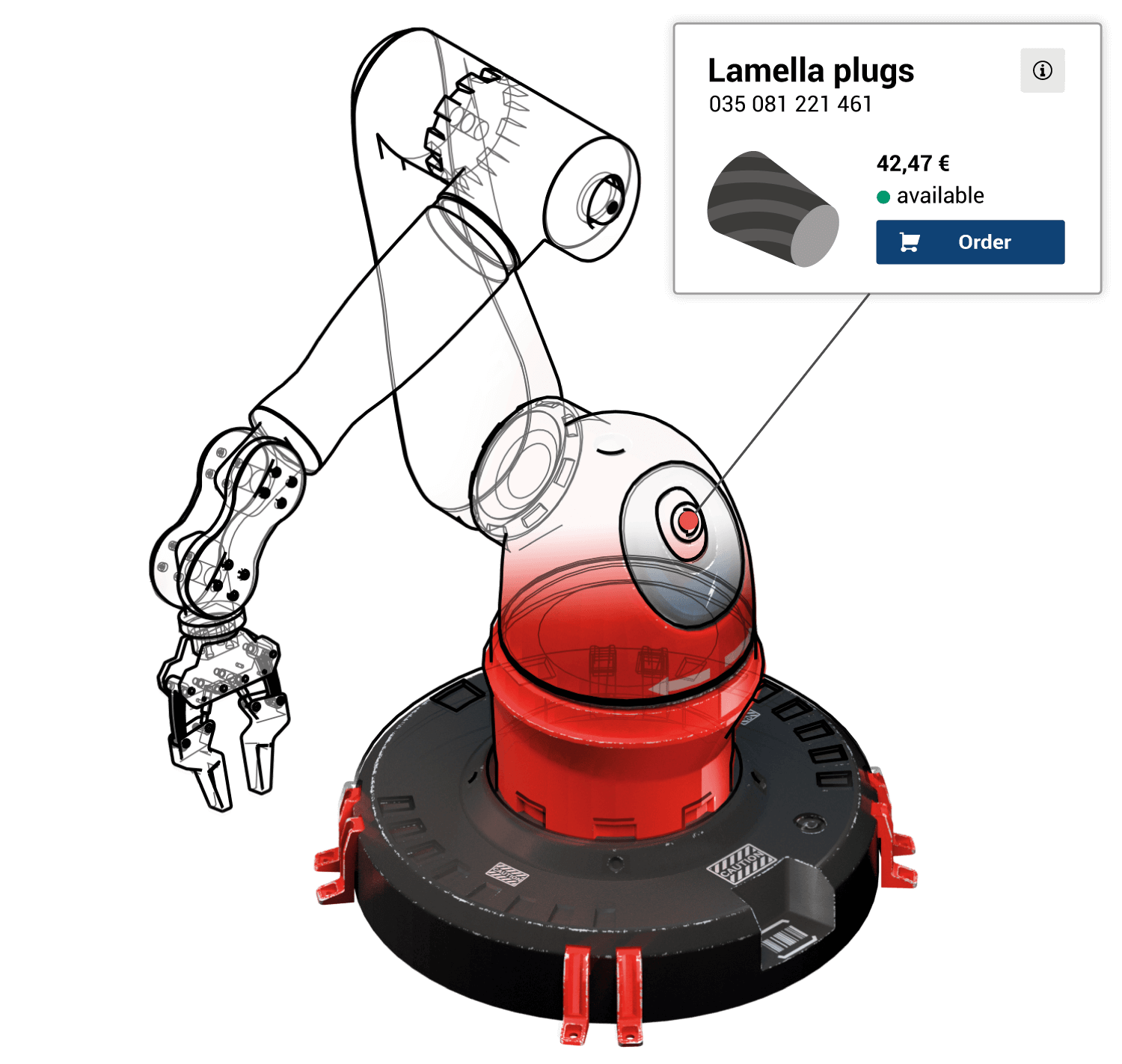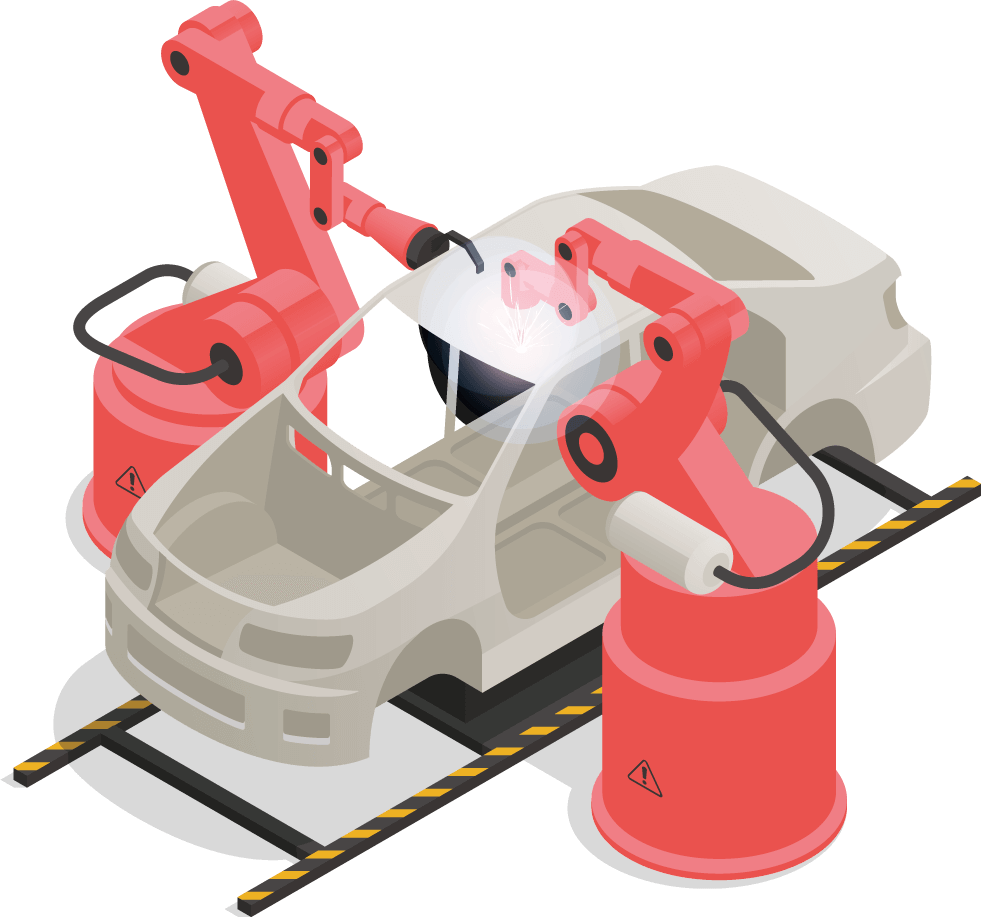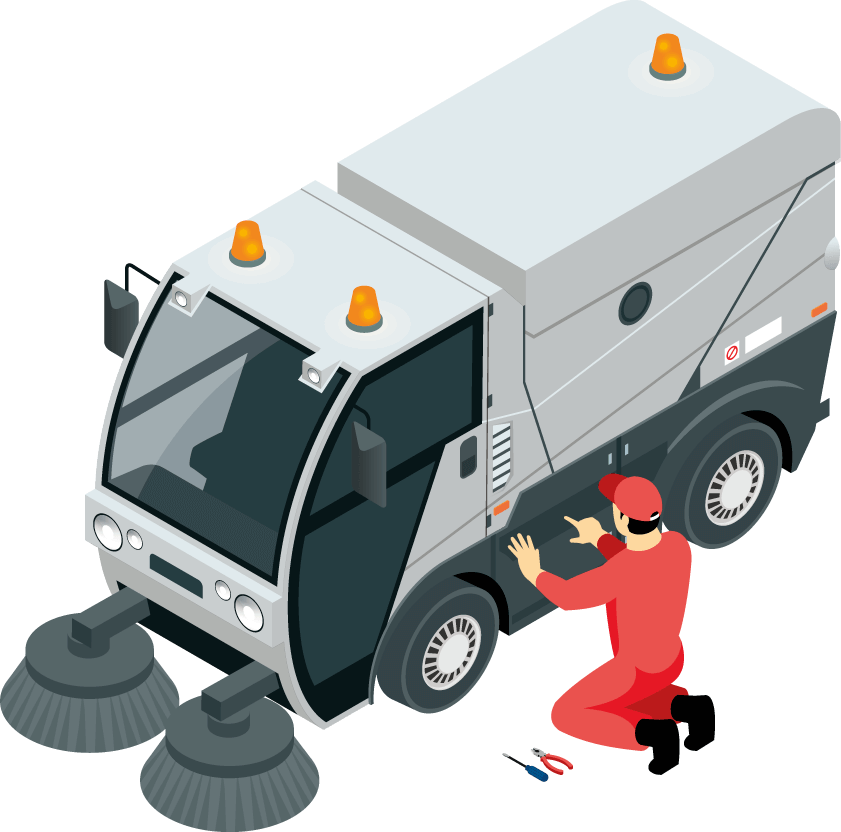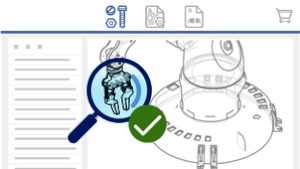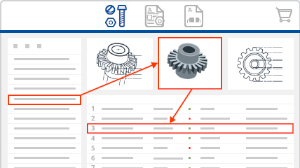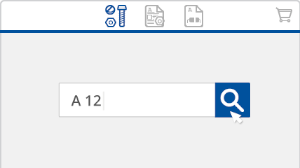What is a digital spare parts catalog?
A digital spare parts catalog includes all data relevant for identifying and ordering spare parts and a bidirectional interconnection of these data. 2D and 3D graphics of parts, models, and exploded drawings are linked with supplementary information on individual parts and parts lists. The data comes from central sources such as ERP, CAD, or other leading systems, and is therefore always up to date.
What information should be included in a digital spare parts catalog?
A digital spare parts catalog contains at least 2D graphics, exploded drawings, or images of individual assemblies, subassemblies, and components which are linked via hotspots with supplementary information such as article numbers, designations, quantities, units, and prices.
The more information contained in a digital spare parts catalog, the more informative it is for the catalog user. Information about availabilities, storage areas, substitutes, customer-specific prices, and much more expand the information content of a digital spare parts catalog. If further information, such as technical documentation, circuit diagrams, repair instructions, hydraulic and pneumatic diagrams, training videos, or other files in any file format, is integrated into your spare parts catalog and intelligently linked with spare parts information, a fully-fledged service information system is created.
Who needs a digital spare parts catalog?
A digital spare parts catalog for an efficient service is needed by manufacturers of durable industrial goods in the fields of machinery, plant, appliance, or automotive manufacturing, who:
- Believe in aftersales & service as important aspects of the corporate strategy
- Build products with a large number of spare parts
- Employ a large number of service technicians
- Operate a large dealer network
A digital spare parts catalog for efficient maintenance and parts management benefits operators of these machines, plant, vehicles, or appliances, who:
- Are dependent on the quick and correct identification and ordering of spare parts
- Require easy access to the corresponding service documentation
What challenges are solved by a digital spare parts catalog?
- Spare part and service information is stored in different locations and on different systems
- Employee expertise is not always available
- Permanent distribution and updating are extremely time-consuming
- Manual data maintenance is often necessary, connection to ERP or PDM systems inconsistent
- Identification of spare parts is complex and laborious
- Extensive effort is required to identify and use the right information
- Realizing optimized spare parts logistics is very difficult
What advantages does a digital spare parts catalog offer to catalog users?
Everyone who uses a spare parts catalog in any way benefits from an intelligent, digital platform. This is because every user works with digital spare parts information more efficiently and can further benefit depending on the challenge:
- Your customers can use your platform to independently identify and order spare parts with ease, without taking up the time of costly resources. That reduces downtimes for your customers and enhances customer satisfaction.
- Service technicians/maintenance staff save lots of time searching for spare parts information during maintenance and servicing. They have access to an efficient service solution, which they can use to give your customers the best possible support.
- Support staff have a lighter workload: on average, fewer incoming calls reduce their workload by 30%, while still being able to provide the best possible assistance to every customer who does still need to call.
How does a digital spare parts catalog help in aftersales & service?
For manufacturers of machines, plants, appliances, vehicles, and components, spare parts have become one of the biggest sales drivers in the service segment. An intuitively usable and interactive spare parts catalog is the most important basis for being able to provide the best possible support to customers.
As a manufacturer of machines, plant, vehicles, and appliances, you can benefit from using a digital spare parts catalog system in many ways:
- Offer your customers and employees a 360° service perspective of your machines and systems.
- Enhance customer satisfaction by simplifying processes.
- Increase the efficiency of processing service transactions and spare parts orders.
- Boost sales in the spare parts and service segments.
- Reduce the work involved in creating, updating, and publishing spare parts catalogs.
- Offer your customers access to the relevant spare parts information for self-service transactions, and in doing so reduce your workload.
- Open a 24/7 sales channel for selling spare parts to your customers.
- Support your global sales channels, customers, and service staff by providing identical information in several different languages.
► Further information for manufacturers of machines, plant, vehicles, and appliances
How does a digital spare parts catalog help in service and maintenance?
For operators of machines, plant, and vehicle fleets, the primary goal is uninterrupted operation. Breakdowns and downtimes can be reduced to a minimum if spare parts can be successfully identified in a digital spare parts catalog without diversions.
As an operator of machines, plant, appliances, and vehicles, you benefit from the digital spare parts catalog in many ways:
- Gain a 360° view of your machinery, plants, or vehicle fleet.
- Consolidate all essential information in a single system, and in doing so create a SINGLE source of information for all your maintenance needs.
- Plan and organize maintenance and servicing with the utmost efficiency.
- Reduce the work required to identify and order spare parts, and thereby realize three- to five-figure cost savings.
- Improve your team’s efficiency by making all information directly available to them in one location.
- Reduce downtime periods to a minimum, and in doing so increase your production capacity.
► Further information for operators of machines, plant, appliances, and vehicles
How can you sell spare parts using a digital spare parts catalog?
By connecting to an ERP system or ERP software, or to an online shop, digital spare parts catalogs become modern self-service portals in the blink of an eye.
The parts that are needed are placed directly in the shopping cart with a single click – without having to use other systems – and the orders are all processed digitally. This reduces the ordering and processing effort for both manufacturers and plant operators. Linking a spare parts catalog with enterprise resource planning ensures a positive user experience. It enables spare parts providers to offer individual prices to their customers as well as entire service packages including accessories and tools.
How can you reduce the number of incorrect orders with a spare parts catalog?
Visualization of spare parts in 2D or 3D format, QR codes on the machine, and a range of options for a text search support the search for the desired spare part in the digital spare parts catalog. Furthermore, only current parts that are installed on the chosen machine are displayed. The information is clear and unambiguous.
With just one click, the required spare part is added to the integrated shopping cart. Errors when entering article numbers or when ordering over the telephone are therefore avoided.
The result for our customers is 20% fewer incorrect orders through the use of a digital spare parts catalog.
Is a digital spare parts catalog also available on mobile devices?
Service technicians are dependent on mobile access to spare parts data to be able to carry out their on-site service work efficiently. A digital spare parts catalog is therefore available on mobile devices.
The big advantage: Instead of having to carry around heavy folders and manuals, technicians can view all relevant information on spare and wear parts on a laptop or mobile device. If this spare parts information is supplemented by circuit diagrams, documentation, or instructions, a comprehensive service information system is created that offers even more flexibility and time savings.
Can digital spare parts catalogs also be used without an internet connection?
Yes, digital spare parts catalogs can also be used without an internet connection. Offline catalogs satisfy stringent requirements with regard to confidentiality and security, and are therefore particularly advantageous in critical sectors such as the medical industry. Other applications include, for example, service work in areas without internet connection or with only poor internet connection.
How do you create a digital spare parts catalog?
With the appropriate software, a digital spare parts catalog is created quickly and easily. The catalog is created in a manual, fully automated, or partially automated manner. The catalog editor supports the user during manual creation, and with partially automated creation, it only takes a few clicks to generate the catalog according to individual requirements. For fully automated creation, the basic settings and links only need to be configured once.
What is a 3D spare parts catalog?
A 3D spare parts catalog is created through the integration of 3D visualizations of assemblies and components. 3D data is informative, interactive, and intuitive. A 3D spare parts catalog allows users to establish more quickly the shape and geometry of components or assemblies through interactions and identify more easily the spare part they need.
► Find out all there is to know about 3D spare parts catalogs
How do you publish a spare parts catalog across various media?
If all information for the spare parts catalog is merged into a single data pool, catalogs can be published across various media with the appropriate software fully automatically or at the touch of a button: You can therefore create catalogs for online, offline, print, or mobile devices. The information can be reused as often as necessary and published in a variety of ways. As a result, you can even create spare parts catalogs that are specific to the user, machine, language, or customer.
The advantage: This not only saves you time on creating catalogs, but also improves your overall service quality.
How do spare parts catalog creators benefit from an intelligent spare parts catalog software?
An intelligent spare parts catalog software package makes day-to-day work easier for spare parts catalog creators:
- Create catalogs for print, USB stick, Internet, tablet, smartphone, Intranet, etc., from a single data pool.
- Customize content and layout.
- Changes to the configuration are visible immediately.
- No repeated processing of data necessary.
- Less effort required for maintenance, quality assurance, and translation.
- Produce less redundant, incorrect, or unnecessary information.
► Further information about spare parts catalog software
What automation options are there?
To avoid manual work when creating or publishing a spare parts catalog, spare parts catalog software solutions offer a range of tools which fully automate the entire creation and publication process. They serve as leverage to increase efficiency and optimize processes. An automated process allows you to focus on other tasks and gives you more time for what’s really important.
Where does the data for a digital spare parts catalog come from?
The relevant data for a digital spare parts catalog comes from various source system, such as:
- Parts list information, material numbers, and prices from the ERP system
- Photos as well as 2D or 3D visualizations from the PDM, PLM, or CAD system
If the digital spare parts catalog contains additional data alongside the pure spare parts information, this data originates from other source systems:
- Circuit diagrams, pneumatic diagrams, or hydraulic diagrams from the ECAD system
- Maintenance, operation, or repair instructions from the DMS or CMS system
The spare parts catalog system intelligently links all service information and makes this available to the user of the digital spare parts catalog in a user-friendly interface 24/7. This means that service technicians, support staff, maintenance staff, and customers receive exactly the information they need to eliminate faults – in a single system.
Digital spare parts catalog and service information system: What is the difference?
A digital spare parts catalog brings information together which belongs together: parts lists, 2D and 3D graphics of your components, as well as supplementary information on individual parts. For this purpose, data from the source systems, such as the ERP system, CAD system, or other leading systems are imported, linked, and published from a central source across different media (online, offline, CD, print).
If further information such as technical documentation, circuit diagrams, repair instructions, hydraulic and pneumatic diagrams, training videos, or other files in any file format is integrated into your spare parts catalog, a fully-fledged service information system is created.
Why is it worth integrating more than just spare parts information into the system?
In the field of machinery and plant construction, digital spare parts catalogs lay the foundation for the transformation of companies from manufacturers to service partners for service technicians and customers. The more information a digital spare parts catalog contains, the more informative it is for the user. This promotes acceptance of the system, saves license costs for other systems, increases the first-time-fix rate, improves customer service and therefore customer satisfaction too.
A service information system opens up opportunities for companies to offer e-commerce solutions and service portals. In the long term, predictive maintenance and digital information twins are no longer out of reach.
How can 3D models be used to create spare parts catalogs?
How does the linking of spare parts data and technical documentation work?
A pure parts catalog is not enough for service engineers to carry out their service jobs efficiently. They require additional information from repair, maintenance, assembly, or operating instructions to be able to replace a spare part or repair a machine. However, searching through multiple systems for this information is very time consuming. It is therefore beneficial to link spare parts information with technical documentation.
How can electronic information be integrated?
In order to efficiently carry out work in customer service or maintenance, service engineers require quick and easy access to electronic circuit diagrams and fluid diagrams. If these are integrated and intelligently linked with the spare parts catalog and the technical documentation, service engineers receive all the information they need to eliminate a fault at a glance and directly at the component in question.
Why is it worth integrating service management software with a digital spare parts catalog?
To retain customer loyalty, plant and machinery manufacturers these days need to stand out with a first-class service offering and a well-organized field sales team. Field service managers are responsible for ensuring that plant and machinery, vehicles, and equipment can be efficiently installed, serviced, or repaired. While the challenges they face may be huge, a field service management solution helps them to overcome all obstacles.
Can I afford to do without a spare parts catalog?
An interactive spare parts catalog is the digital foundation on which manufacturers can build future-proof aftersales services. If you want to
- digitalize and optimize your processes,
- offer your customers an optimal service,
- and would like to increase your service efficiency and subsequently save costs,
then you can’t afford to do without a digital spare parts catalog.
What is Quanos SIS.one?
Quanos SIS.one is a software package for the easy creation of spare parts catalogs and service information systems. Quanos SIS.one integrates, consolidates, and links together service-relevant data, and makes this available on a user-friendly interface 24/7. The result is an information system for aftersales and service which improves efficiency and quality, reduces costs, and speeds up processes.
